
Let's talk Brittany
You say “Brittany”, we say “lust for life”. This beautiful dog gives 100% to whatever they’re doing, whether that’s playing with children or other pets, running around, or chasing after birds. The energetic temperament of the Brittany, bred as a gundog, will not be for everyone. But their happy-go-lucky attitude makes them a charming canine companion. The Brittany is not well-suited to apartment life but this is due more to their high-energy than their size. If you’re the active, outdoorsy type, then the Brittany may well be the breed for you.Official name: Brittany
Other names: Breton Spaniel, Brittany Wiegref Epagneul Breton French Brittany
Origins: France

| Drooling tendencies |
|
Warm weather? | |
| Shedding level | Suited to apartment living? | ||
| Energy level (high, low, medium) *: | High | Family Pet?* |
|
| Compatibility with other pets | Can stay alone?* |
* We advise against leaving pets alone for long stretches. Companionship can prevent emotional distress and destructive behaviour. Speak to your veterinarian for recommendations.
Every pet is different, even within a breed; this snapshot of this breed’s specifics should be taken as an indication.
For a happy, healthy and well-behaved pet, we recommend educating and socialising your pet as well as covering their basic welfare, social and behavioural needs.
Pets should never be left unsupervised with a child.
All domestic pets are sociable and prefer company. However, they can be taught to cope with solitude from an early age. Seek the advice of your veterinarian or trainer to help you do this.
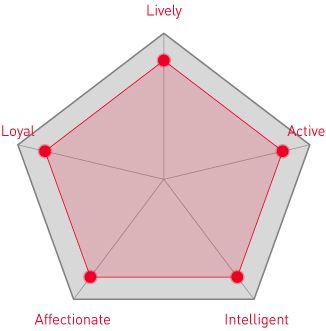

| Baby age: | Birth to 2 months |
| Puppy age: | 2 to 12 months |
| Adult age: | 1 to 7 years |
| Mature age: | 7 to 10 years |
| Senior age: | From 10 years |
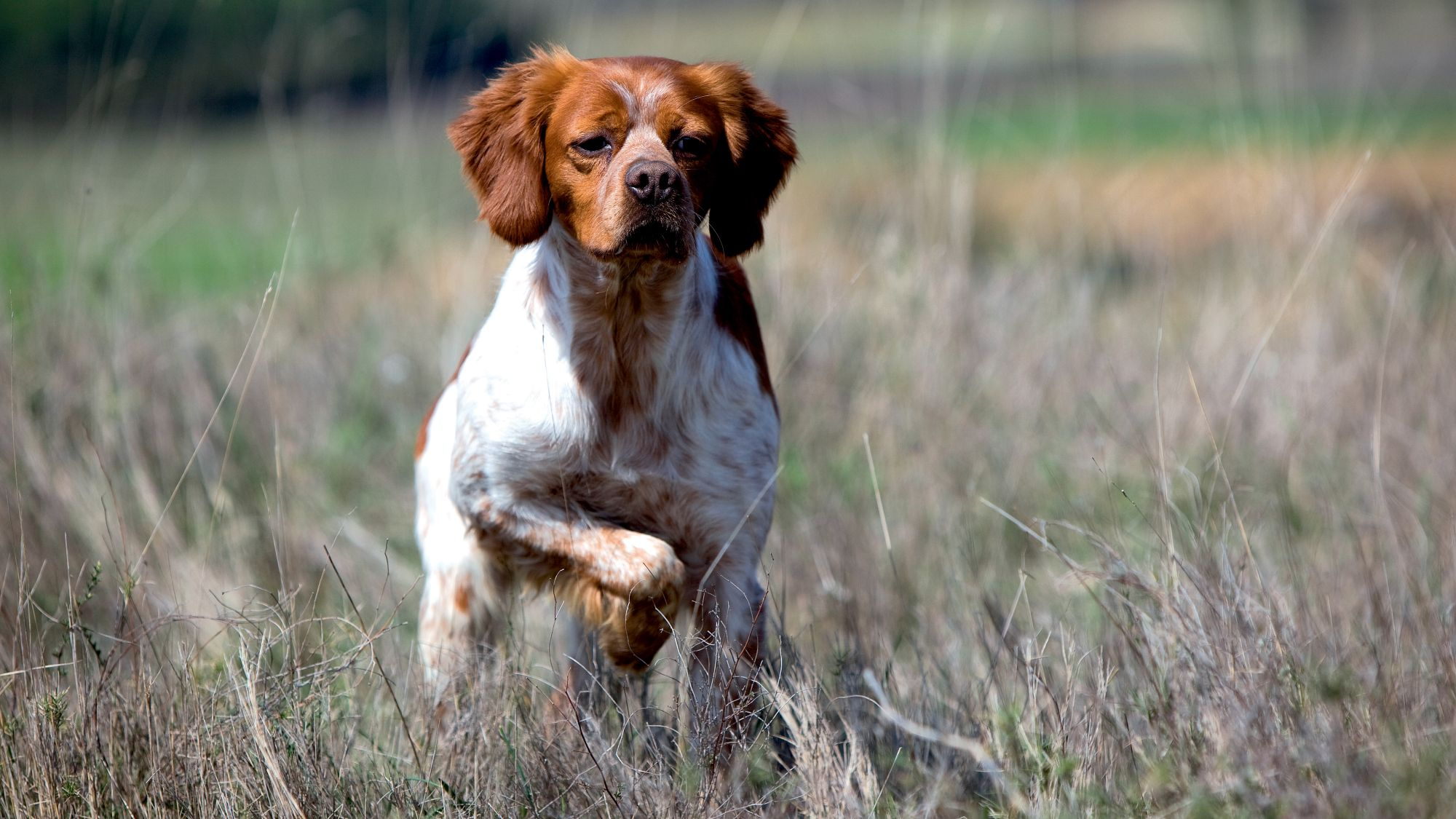
1/7
Get to know the Brittany
All you need to know about the breed
The breed hails from the Brittany region in northwest France, hence their name, and bears more than a passing resemblance to the Welsh Springer Spaniel. This is likely due to the profitable trading relationship that Wales once enjoyed with Brittany, which involved dogs travelling across the English Channel.
Their natural fondness for pointing and retrieving has made the Brittany breed popular with poachers in the past, but they don’t have an aggressive bone in their body. The Brittany is just a friendly dog who likes to receive head pats from anyone and everyone – so not your best guard dog – and is always up for a spot of adventure.
A Brittany is an adaptable dog with a sunny temperament, which makes them great around people of all ages. However, they’re far too high-energy for an apartment and require some supervision around children, not because they pose a threat, but they may knock little ones over through pure excitement.
If you are a confirmed homebody then this is not the breed for you. Brittany dogs are highly intelligent and require one to two hours of exercise per day, which includes mental stimulation. They will get bored if left to their own devices, which can lead to destructive behaviour and cause them to start barking.
A Brittany’s joie de vivre makes them a pleasure to live with, as they’re even-tempered dogs who show affection easily. You just have to love being outside as much as they do.
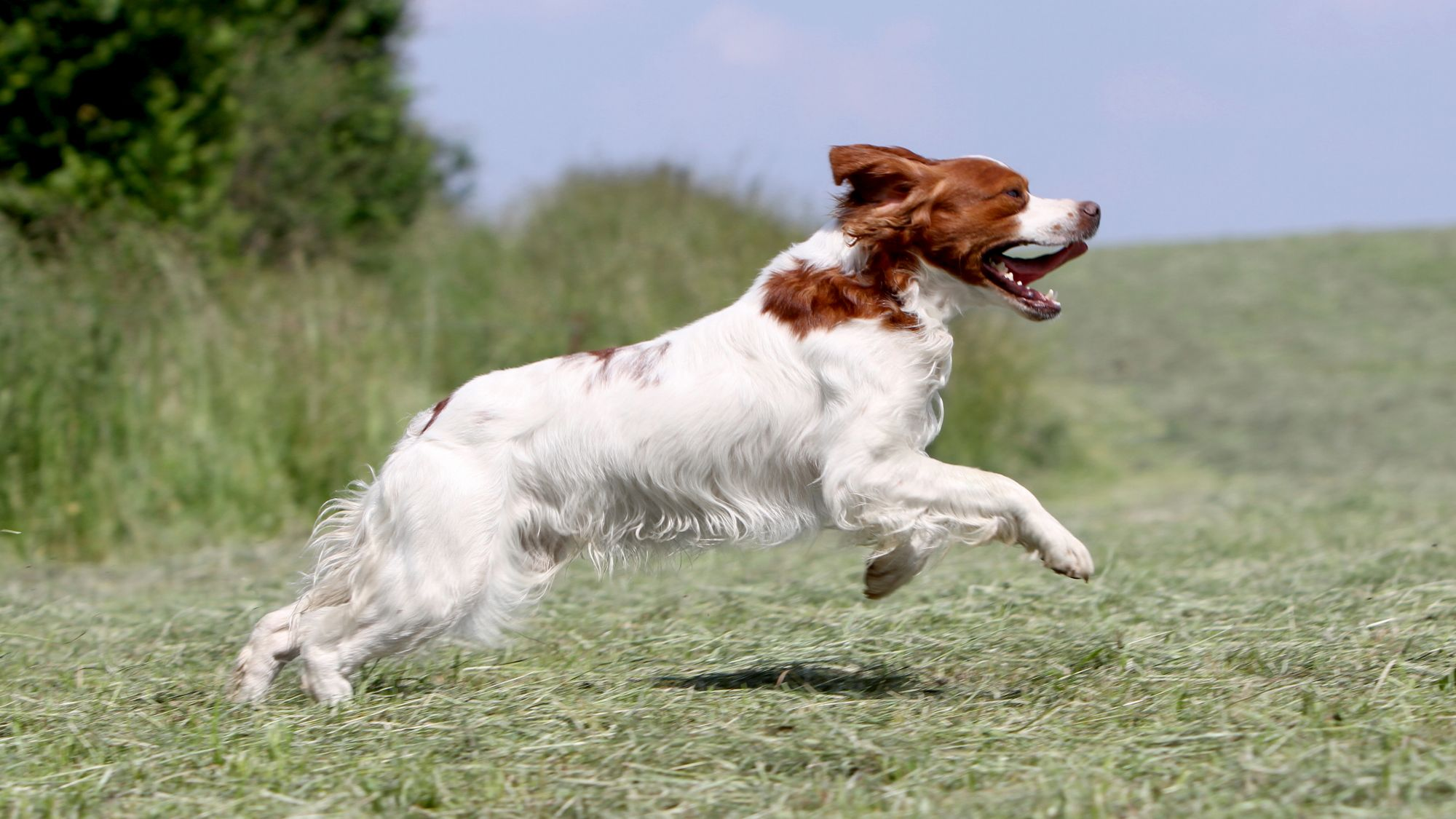
2/7
2 facts about Brittany
1. Works of art
The first representation of a Brittany is actually visual. This good-looking canine made an appearance in paintings and tapestries during the 17th century. They were often depicted in nature, helping to point gamekeepers in the direction of partridge and other birds. Even today, the Brittany is a noticeably attractive dog who often nabs compliments from passersby.
2. A water baby
The Brittany needs a fair amount of daily exercise, but their athletic spirit means that they take to most sports like a duck to water. Speaking of ... the Brittany enjoys splashing around in a lake or stream, to cool down after all that running around. Their flat coat is resistant to both the cold and water, further proof that this canine thrives in the great outdoors.
History of the breed
Originating from Brittany on the west coast of France, the breed was first referenced in the 17th century. They were developed by hunters as bird dogs due to their natural talent for pointing out feathered animals such as partridge, duck, and pheasant. To this day, the Brittany is admired for their agility and responsiveness to taking orders.When dog shows became popular throughout Europe, the Brittany breed proved to be a natural just as much in the show ring as they were in the field. They were officially recognised in their home country in 1907. The first appearance in the U.S. for the Brittany was in 1931, where they quickly became popular thanks to their sporting talents and canine charm.
In the 1980s, the AKC decided to drop the “Spaniel” from the name, as they considered the breed to be closer to a pointer. The French, however, kept the original breed name. To date, the Brittany has accumulated the highest number of Dual Championship wins than any other breed. All in a day's work for this exceptional dog.

4/7
From head to tail
Physical characteristics of Brittany
1. Coat
A dense coat, either flat or wavy but never curly.
2. Eyes
Eyes are well set with an expressive look.
3. Eyebrows
Eyebrows are heavy, to protect them while pointing.
4. Legs
Back legs are muscular, with strong thighs.
5. Tail
Either completely tailless or a short tail, around four inches long.
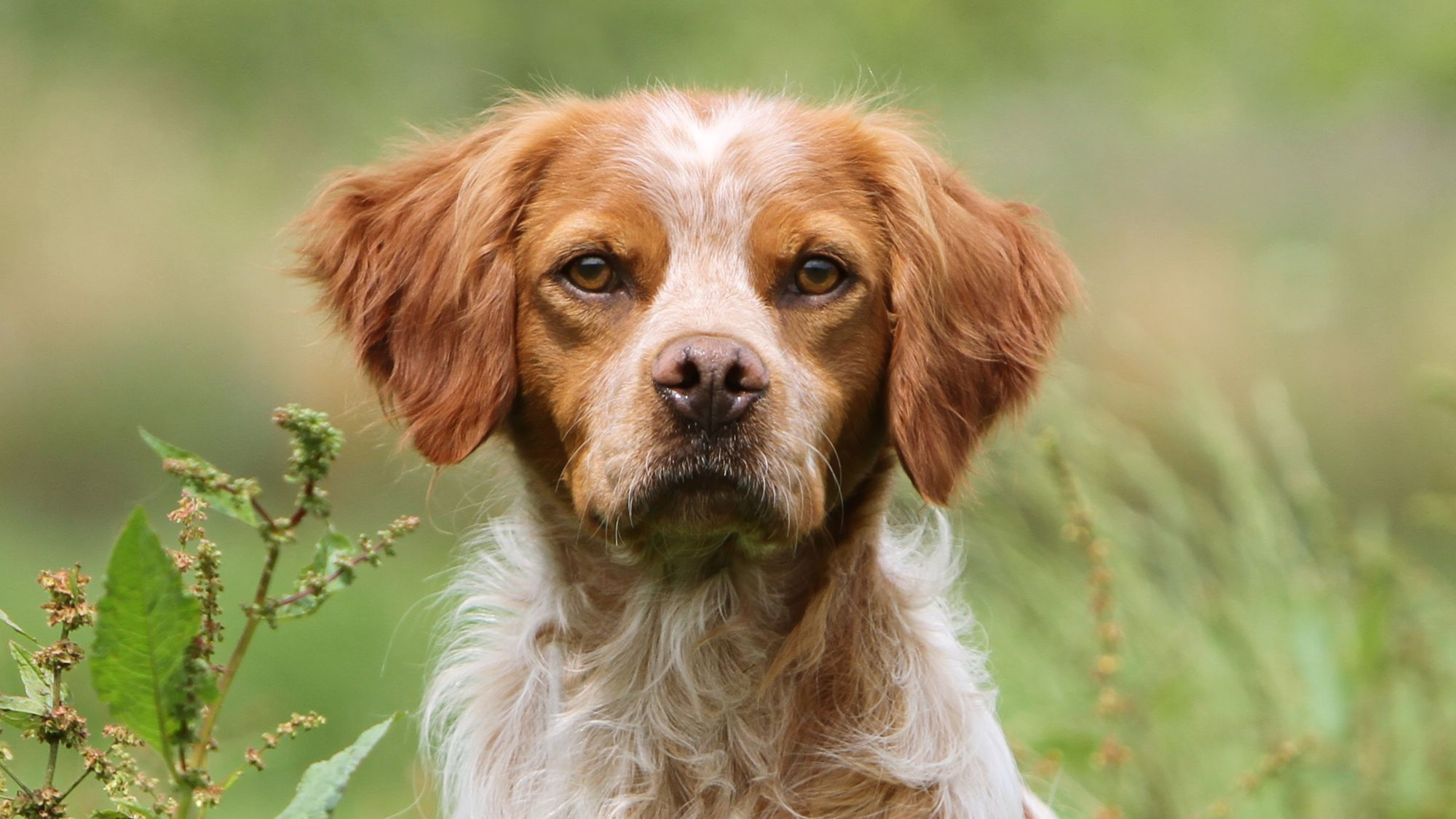
5/7
Things to look out for
From specific breed traits to a general health overview, here are some interesting facts about your Brittany
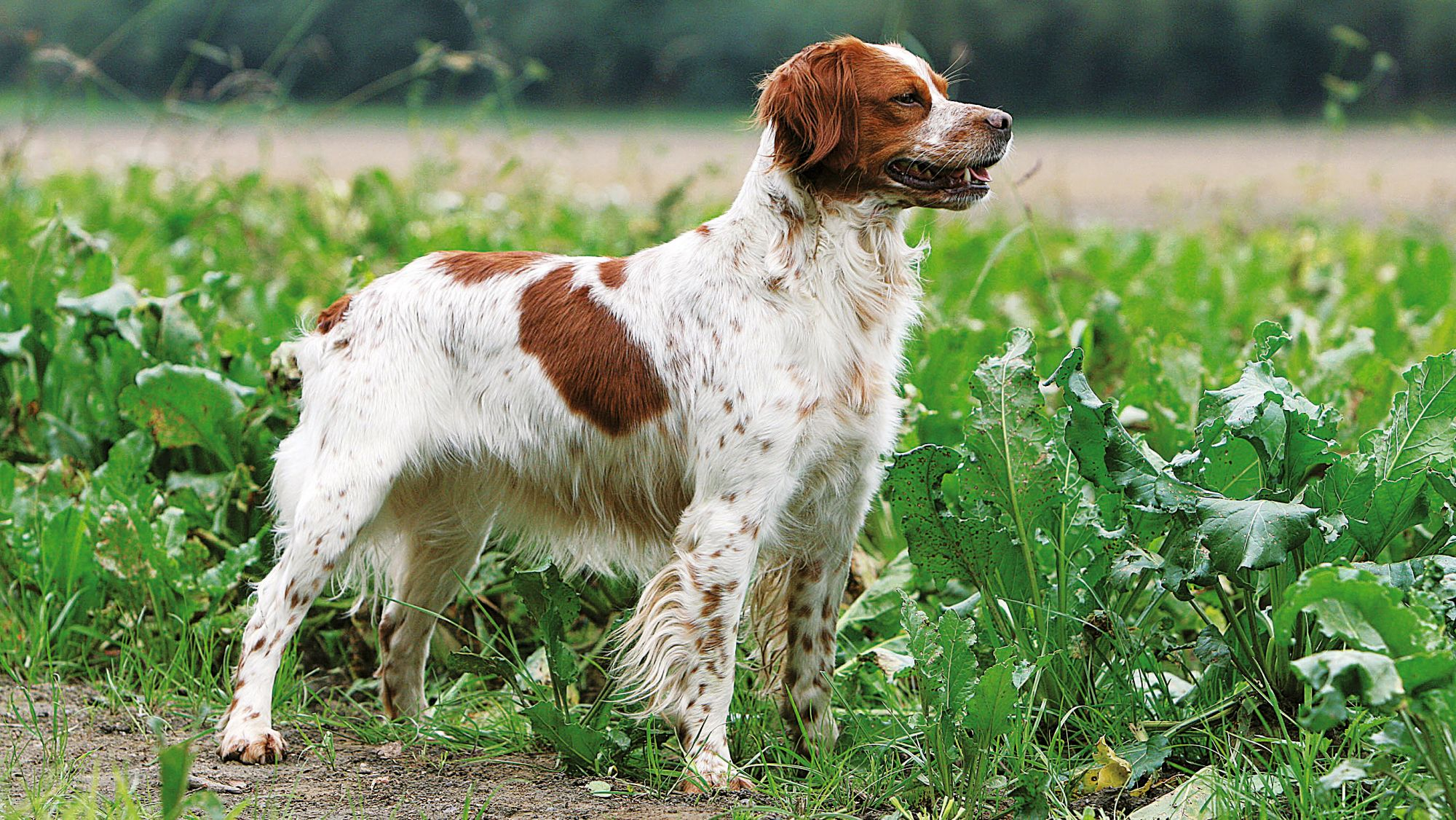
6/7
Caring for your Brittany
Grooming, training and exercise tips
Grooming the Brittany requires twice-weekly brushing of their coat with soft bristles. Their ears should be checked regularly to prevent wax build-up and their nails need to be trimmed monthly if they are not naturally worn down. In terms of training, the Brittany is a willing student. Their intelligence makes them quick learners and their affable personality makes them eager to please. A gentle approach works best as the Brittany is far too gentle to respond positively to harsh methods. This breed can’t get enough exercise! They are high energy and prefer to stay active with people, so they make a great jogging or hiking companion. The Brittany tends to be fine off leash in the dog park, because of their easy-going temperament and natural aptitude for training.7/7
All about Brittany
Yes. In fact, the affectionate Brittany would like to be a lap dog but they are a little too big for that. It won’t stop most of them from trying to climb onto your lap however. Despite their out and about vibe, the Brittany is very affectionate and will thrive as part of an adventurous family. The more the merrier for this dog-friendly, kid-friendly canine.
Quite the opposite—the Brittany is intelligent and has people-pleasing tendencies. They are particularly skilled at obedience training, as well as tracking activities where they can put their sense of smell to good use. Like most canines, the Brittany responds well to rewards, which should be taken from their kibble portion to keep them at a healthy weight.
translations.feature.breeds.otherbreeds
Read more on this topic

How your dog's nutrition needs change with age

How to adopt a dog

Things to consider before getting a dog
Sources
1 - Veterinary Centers of America https://vcahospitals.com/
2 - Royal Canin Dog Encyclopaedia. Ed 2010 and 2020
3 - Banfield Pet Hospital https://www.banfield.com/
4 - Royal Canin BHN Product Book
5 - American Kennel Club https://www.akc.org/



